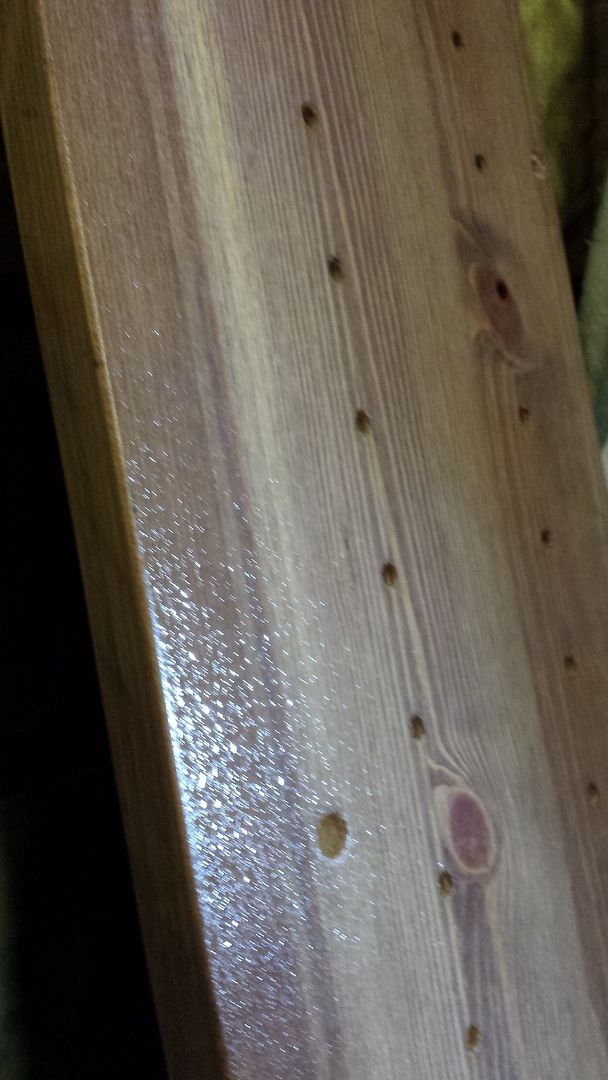Although you may be able to get a reasonable fan pattern with unthinned lacquer, the coat wont flow out and will dry as per your first image.
Alomost all lacquers will need thinning before spraying, especially through an hvlp set up. I would buy some 600ml mixing cups and then thin the material by ratio. Water based materials should only be thinned by a maximum percentage but I would try between 5% and 10%. Although its tempting to slosh a bit of water in and spray, I would recommend doing it somewhat methodically and measure out accurately and record what you do, so once you get it right you will be able to repeat the set up.
Experiment with spray-outs on some card or wallpaper etc. I would never go straight to the work, a spray-out will always tell you if the set up is right. Its useful to start by having the gun stationary and trigger the gun, this will tell you if the fan pattern is the correct shape and help with establishing distance. Once happy with that, spray a horizontal stripe and check wet film and see if it flows out nicely. Once happy with that try a spray-out over an area, over lapping by 50% and look at the result to see if your overlaps are giving an even coverage. When spraying an item remember the first pass with the gun needs to be with the gun almost in line with the edge, so you achieve a full wet coat right to the edge of the work.
Its also valuable to keep checking your sprayout as it dries so you can see how the film changes as it flashes off -a coat too thin will have dry patches, too wet and you will see runs develop at edges, too thick and you will notice the coat does not flow out and the finish dries as orange peel
I find spray-outs are actually best done on a smooth surface like an offcut melamine faced chipboard, it will make it easier to see the film build and more like your second coat would be. Its difficult to see the quality of the wet film on bare timber as the film is soaking in as you spray.







































